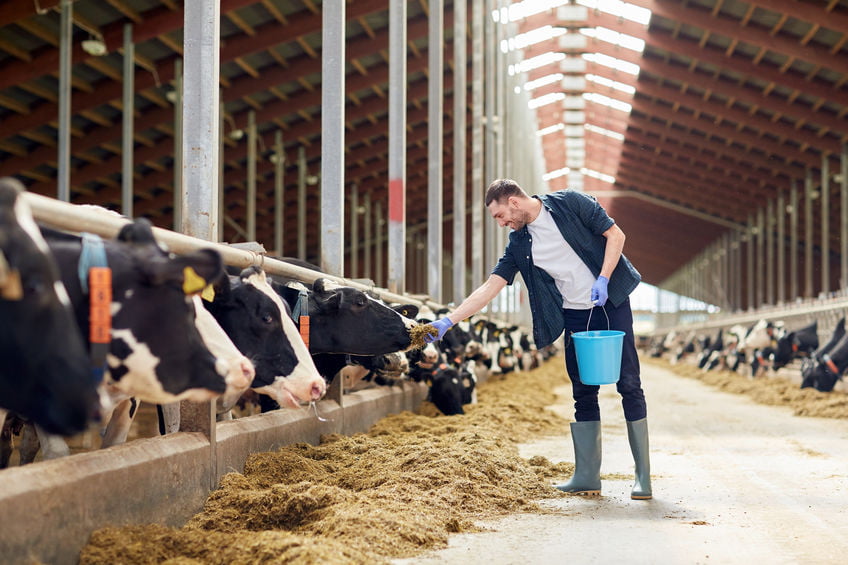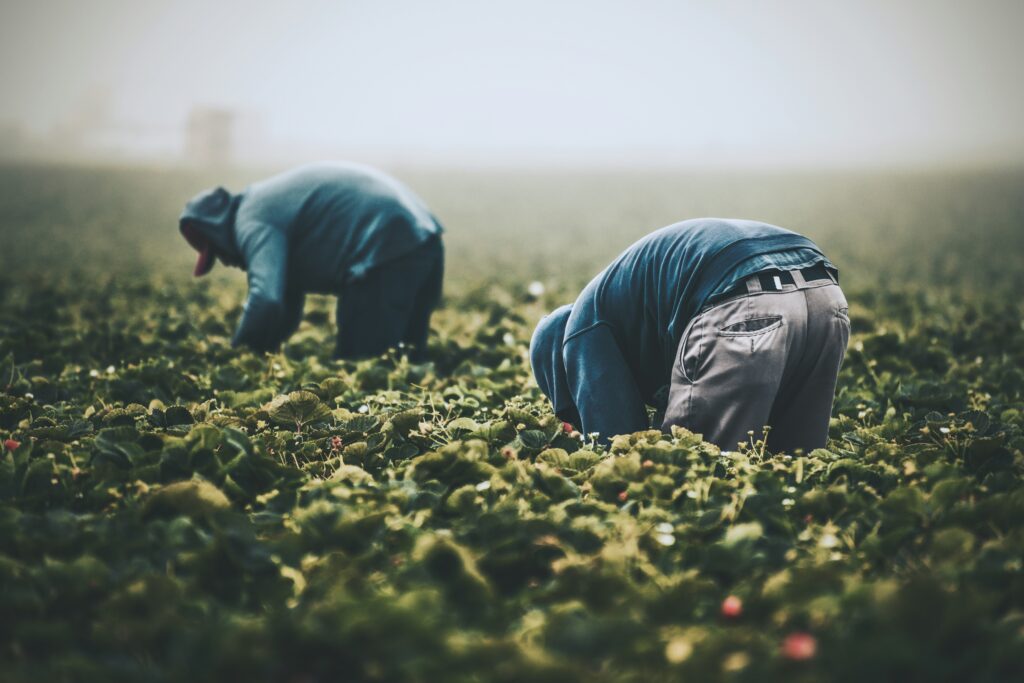Protecting Farm Lone Workers in Britain’s Most Dangerous Industry

Farming and agriculture have been found to be Britain's most dangerous industry. Farm workers often carry out their jobs alone which leads to many more incidents and fatalities. One way of bringing the numbers down and improving the safety of agricultural workers is to use a lone worker system.
The Agriculture Fatality Rate
Agriculture has the worst rate of fatal worker injury, per 100,000 workers, within all main industrial sectors: 5.96 per 100,000.¹ This is eighteen times higher than the All Industry rate of 0.4.²
During the year 2019-2020 the highest number of deaths were vehicle related, involving tractors, a combine harvester, telescopic handlers, an all-terrain utility vehicle, and a boat. This is broadly consistent with the five-year annual average where being struck by a vehicle; killed by an animal; or falling were the most common causes of a fatal injury.³
Causes of death for Farm Workers
This year twenty-one people were killed in the agricultural industry. Eighteen less than last year and nine less than the five-year average of thirty. This is the lowest number of deaths recorded in the last five years.⁴
While the number of deaths by each cause has fallen and varies each year, the 5 most common causes stand as:
● Struck by moving vehicles
● Fall from height
● Struck by an object
● Killed by animals
● Contact with machinery ⁵
Twenty-one deaths seems high; however, it is just over half of the figure from 2018-2019 where thirty-nine people lost their lives.⁶ The rate of fatal worker injury, per 100,000 workers for 2018-2019 was 9.21 compared to the All Industry rate of 0.45.⁷ Thirty-nine deaths was six more than 2017-2018 and six more than the five-year average, which at that point was thirty-three. Of the thirty-nine deaths, seven were members of the public, which included two three-year old children.
Bringing the Fatality Rate Down with Safety Measures
Although the number of fatalities has dropped this year, Health and Safety England, the Farm Safety Partnerships (FSP) in England, Scotland and Wales and the Agriculture Industry Advisory Committee (AIAC) are concerned about the number of fatal injuries in the agriculture sector each year. ⁸
One way of bringing the numbers down and improving the safety of agricultural workers is to use a lone worker system. There are many different solutions available to lone workers that allow them to keep in touch by checking in. However, not all solutions are as simple and convenient as a Smartphone app.
How a Lone Worker Solution can protect Farm Workers
The purpose of a Lone Worker Solution is to ensure all workers go home safely at the end of each day. Lone worker’s need a safety solution that allows peace of mind that if anything goes wrong, someone will know and can send help. Lone worker solutions are simple systems that connect lone workers with a supervisor who monitors their well-being. The supervisor could be another worker or staff in a call centre.
The Ok Alone system has a wide range of features designed to make people working remotely feel safer. The system has an automated countdown timer which reminds lone workers to make contact by checking in using either a smartphone app, SMS or phone call. Workers are also able to check in or request help using the hands-free voice command option.
Getting Farm Worker Protection with Ok Alone
Farm workers are able to change the frequency of their check ins with the ‘high-risk’ feature. If a worker enters an area where they feel vulnerable, they can reduce the check in time to as little as 10 minutes. After the time has passed with no alerts, the check in frequency will revert to the original count down duration.
Ok Alone’s lone worker smartphone app works in conjunction with a website and cloud-based dashboard that can be used on pc, laptop, tablet or another smartphone. The online dashboard will display a map, supplying whoever is monitoring, with the lone workers last known location if an alert is triggered. This will allow help to be sent to the correct location at a moment’s notice.
1, 2, 3, 4, 5 - Fatal injuries in agriculture, forestry and fishing in Great Britain 2019/20, Health and Safety Executive
Fatal injuries in agriculture, forestry and fishing in Great Britain 2019/20 (hse.gov.uk)
6, 7 - Fatal injuries in agriculture, forestry and fishing in Great Britain 2018/19, Health and Safety Executive
Fatal injuries in agriculture, forestry and fishing in Great Britain 2019/20 (hse.gov.uk)
8 - Fatal injuries in agriculture, forestry and fishing in Great Britain 2019/20, Health and Safety Executive
Fatal injuries in agriculture, forestry and fishing in Great Britain 2019/20 (hse.gov.uk)
Book a Demo Today
Alternatively, get a free trial of the app
Want to try OK Alone? Click the button below and enter your details. It's free and no credit card is required.





